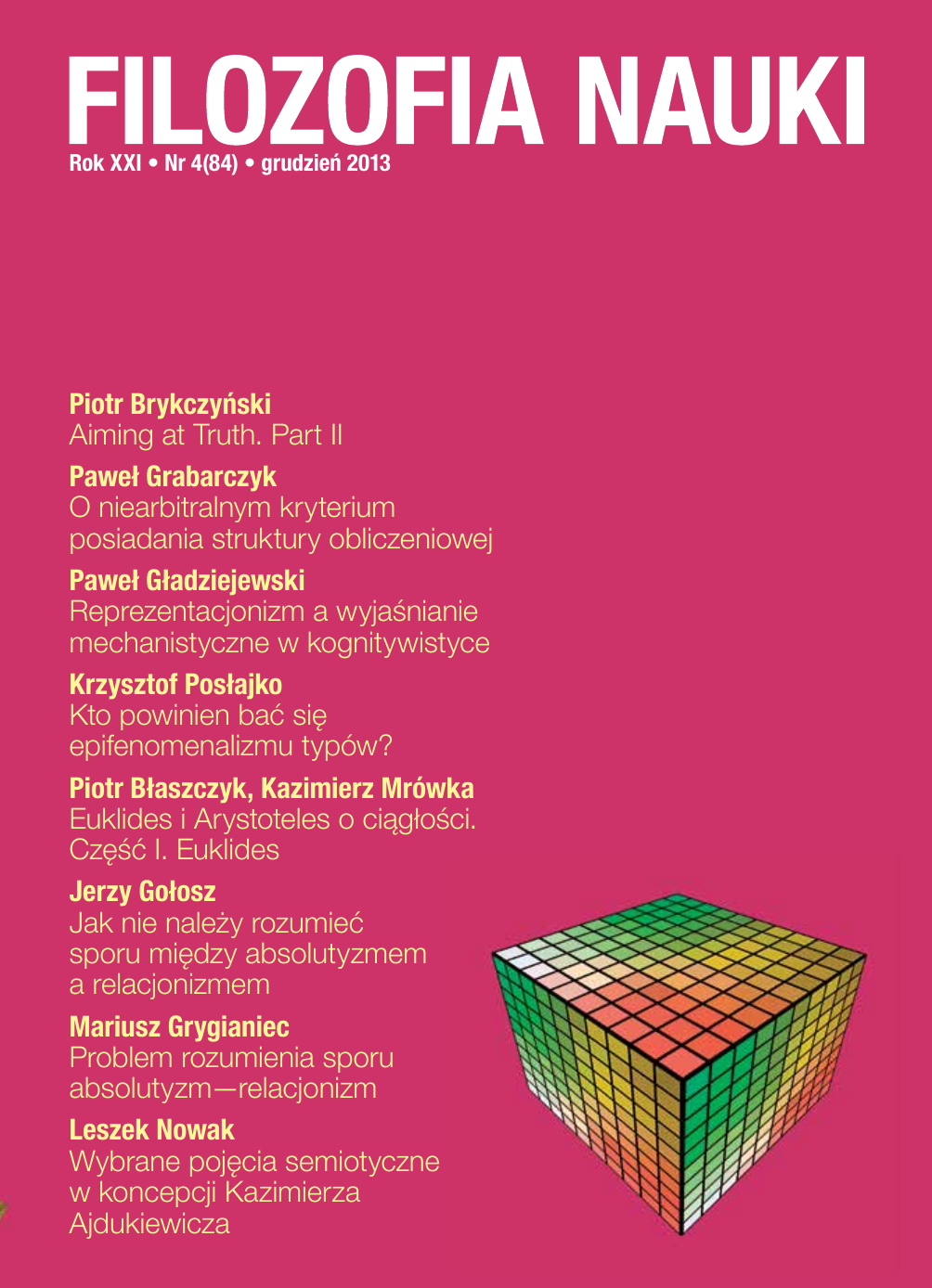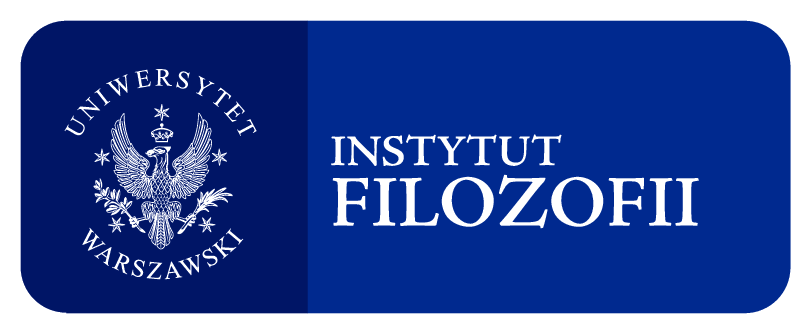Euklides i Arystoteles o ciągłości. Część I. Euklides
Słowa kluczowe:
Euclid, Aristotle, Cantor, continuity, magnitude, real numbers, segment, structure of segmentsAbstrakt
Line segment is a kind of ancient Greek μέγεθος. It is described mathematically in Euclid’s Elements and in a philosophical way in Aristotle’s Physics. In this first part of our paper we present Euclid’s twofold attitude toward a line segment: the first one developed in his theory of proportion of magnitudes (book V), the second in his plain geometry (books I-IV). Euclid’s magnitudes are of several different kinds: lines segments, triangles, convex polygons, arcs, angles. Magnitudes of the same kind can be added to one another and compared as greater–lesser. We provide a set of axioms for the line segments system (M, +, <) and show that the total order of segments < is compatible with the addition operation +. The positive part of an Archimedean field is a model of these axioms. Next, we present an interpretation of Euclid’s proposition I.10 and show that Aristotle’s famous saying “everything continuous is divisible into divisibles that are infinitely divisible” applies to a single line segment. Our study is based on Heiberg’s Euclidis Elementa.Pobrania
Opublikowane
2013-12-01
Jak cytować
Błaszczyk, P., & Mrówka, . K. (2013). Euklides i Arystoteles o ciągłości. Część I. Euklides. Filozofia Nauki, 21(4), 91–115. Pobrano z https://www.fn.uw.edu.pl/index.php/fn/article/view/739
Numer
Dział
Artykuły















 Filozofia Nauki | ISSN 1230-6894 | e-ISSN 2657-5868
Filozofia Nauki | ISSN 1230-6894 | e-ISSN 2657-5868